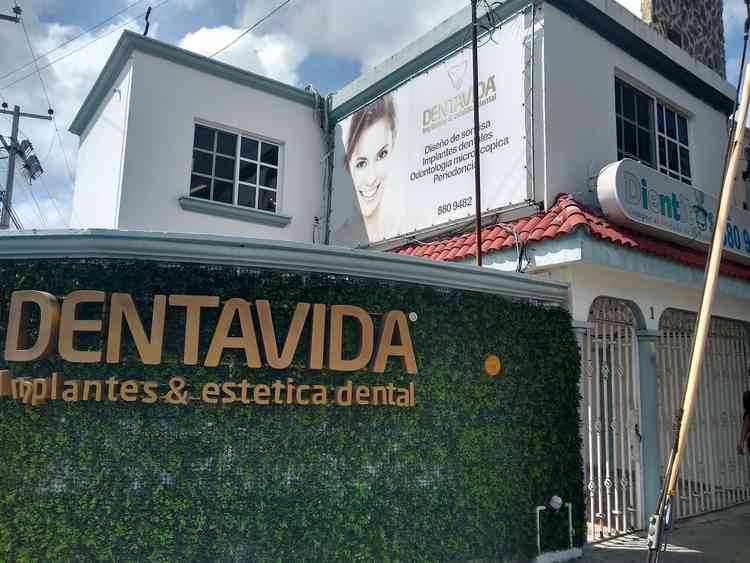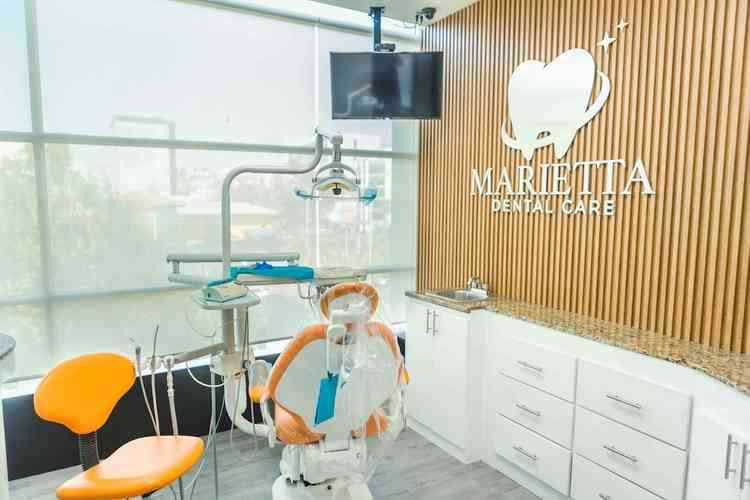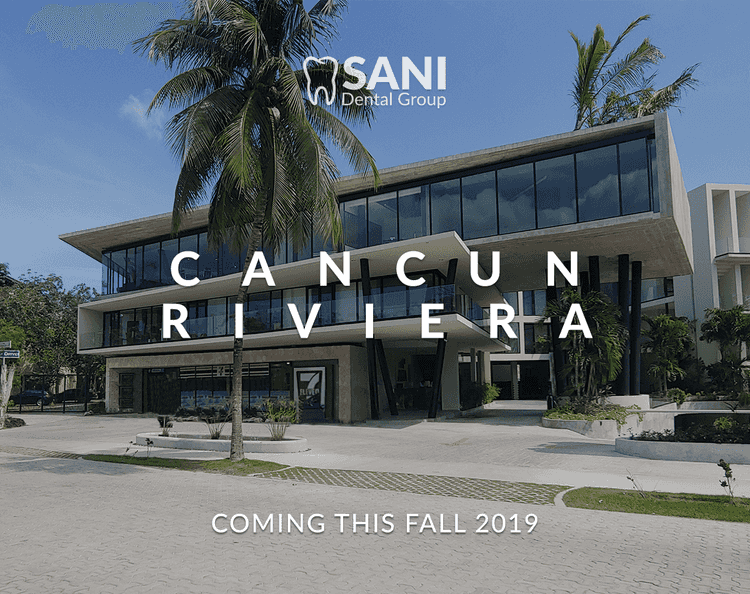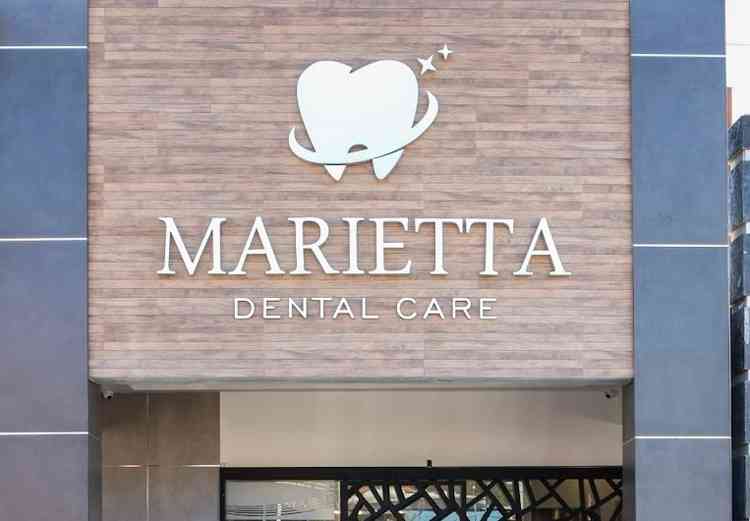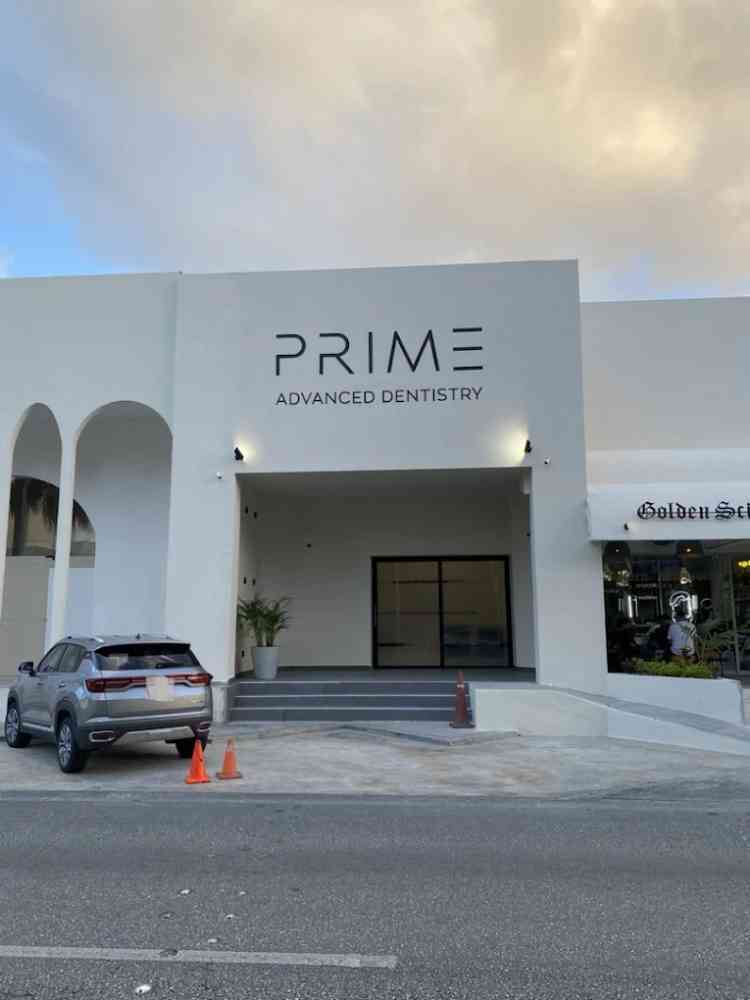Everything About Cosmetic Dentistry: Top Procedures To Transform Your Smile

Prathyusha Itikarlapalli
- Content Writer

XAVIER PRIMO PAVÓN
- Reviewed by

Table of contents
None
Key Takeaways
- Cosmetic dentistry deals with various treatment procedures that can improve the way your smile looks.
- Cosmetic dental treatment can improve teeth' color, shape, shade, size, alignment, and gum shape. The overall goal is to address various factors impacting smile symmetry.
- Teeth whitening, veneers, bonding, contouring, orthodontics, inlays, onlays, and crowns are popular cosmetic dental treatment procedures.
Natural teeth develop some minor issues over time. These can be chips, breaks, cracks, stains, or missing teeth. While these concerns do not hamper teeth' functional tasks, they can greatly impact smile appearance. Ultimately, it can steal away your confidence, making you feel uncomfortable in public. Fortunately, thanks to advanced dental techniques, you do not have to compromise on anything, sacrificing your quality of life. Modern dentistry considers dental work not only in a functional sense but also in aesthetics. To be more clear, modern dentistry has solutions for all dental concerns. It has solutions that can restore lost functions, prevent oral health issues, and enhance your smile appearance. Cosmetic dentistry truly stands out in the latter category. Now, let’s begin with understanding cosmetic dentistry meaning.
What is Cosmetic Dentistry?
The branch of cosmetic dentistry works on a range of dental issues to improve the appearance of your smile. Simply, it aims to beautify your smile. Cosmetic dentists are qualified and certified dental professionals proficient in various procedures (single or combination) to enhance your smile. While broken, chipped, or stained teeth make your smile look awkward, cosmetic dentists work on tailored treatment plans to impart completeness to your smile.
Having read this, are you wondering if cosmetic dentistry treatment isn't the same for everyone? Yes, it's indeed true that cosmetic dental treatment is personalized based on the requirements. It can be a single or a set of various procedures.
What Is the Difference Between a Cosmetic Dentist and a Regular Dentist?
Regular or general dentists provide you with the primary oral care needs. You can approach them for routine check-ups and dental examinations. They also perform treatments like dental fillings, cavity removal, crowns, bridges, and root canals. However, cosmetic dentists perform those procedures that improve teeth color, shape, size, alignment, and contour to the gum line.
In simple words, general or regular dentists aim to prevent and treat dental problems. However, cosmetic dentists aim to improve the overall appearance of your smile and face.
Best Cosmetic Dentistry: What It Deals?
Cosmetic dentistry deals with dental issues that impact the way your smile looks. Cosmetic dental procedures improve the teeth' color, shade, shape, size, and alignment. Typically, the issues that cosmetic dental work deals with include:
- Chipped, cracked, or broken teeth
- Stained or discolored teeth
- Diastema or gapped teeth
- Misshapen or malaligned teeth
- Missing teeth gaps
- Gummy smile with boxy teeth
However, only some patients with these issues will be candidates for cosmetic dental work. Your cosmetic dentist will evaluate your candidacy and determine the right procedure or combination. Are you wondering how to get cosmetic dentistry near me? Do not worry. All you will need are healthy gums free from oral diseases.
While your dentist will help you find the right procedure tailored to your needs, you need to understand what a dentist does to enhance the way your smile looks. Knowing briefly about various cosmetic dentistry procedures helps you stay prepared.
Most Popular Cosmetic Dental Procedures
Here are the various types of cosmetic dentistry treatment procedures that most dentists use to improve your smile.
Teeth Whitening
The techniques of teeth whitening remove stains and improve the existing shade of your teeth. Natural teeth develop stains with the foods you eat. Foods like tea, coffee, red wine, berries, and soft drinks darken the natural shade of your teeth over time.[1] This can add dullness to your smile. However, cosmetic dentists use peroxide solutions to remove those stains and add radiance to your smile. They prescribe at-home kits and in-office whitening procedures. The take-home whitening kits contain bleaching agents in the form of strips or gels. Your dentist will define the frequency of usage to obtain the apt results. However, the in-office whitening offers effective and faster results. The bleaching agents are stronger than those in at-home kits. Your dentist will protect your gums using a rubber dam and apply the whitening gel. They will boost up the bleaching process using a light source. Typically, in-office cosmetic dentistry whitening costs you higher than the at-home kits. However, you can expect definite results.

Dental Veneers
Dental veneers are tooth-colored, thin shells made from high-quality dental materials like porcelain or lithium disilicate. Ideally, they cover the front teeth' flaws like breaks, chips, stains, or gaps.[2] Natural teeth develop chips or breaks during eating, biting hard objects, accidents, or trauma. Some patients develop a wide gap between incisors. These gaps or breaks on the front teeth can ruin your smile. Cosmetic dentistry veneers conceal these flaws and impart fullness to your teeth. Your dentist will etch the damaged tooth to create a rough surface. They will fix the veneers using dental adhesive. However, veneers do not add strength to the existing teeth and are solely for aesthetic purposes. Further, they cannot solve the issues of your back teeth. More importantly, veneers are for natural teeth only. Veneers are not for artificial teeth held over dental implants.

Teeth Contouring
Teeth contouring or odontoplasty is the process of reshaping teeth inorder to attain a symmetry of teeth shape and length. It can fix the chips, cracks, breaks, and damage to teeth due to grinding. Your dentist will remove some part of the enamel by drilling or using a laser. This procedure is simple and will be carried out under local anesthesia, so you will barely feel any pain. However, some patients may develop sensitivity gradually as the enamel wears off due to reshaping.[3]
Inlays and Onlays
Inlays and onlays are indirect fillings for back teeth. They serve both restorative and cosmetic purposes. Dentists prepare them outside the dental cavity and then use adhesive to fix the damaged tooth. Your back teeth are chiefly involved in chewing activities and can experience cavities or get worn off. Inlays typically cover the areas inside the cusps and are a great solution for cavities. However, onlays cover the worn-out or decayed cusps. While your dentist has a choice of using various dental materials like gold, porcelain, or ceramic, tooth-colored porcelain is best chosen for cosmetic dentistry procedures.
Dental Bonding
Dental bonding, typically called direct filling, is used to fix chipped, broken, gapped, or misshapen teeth. While it serves cosmetic as well as restorative purposes, dental bonding is one of the low-cost cosmetic dentistry procedures. Your cosmetic dentist will use a putty-like composite resin that matches your natural tooth color. They will directly bond the resin on your damaged tooth and light cure it to harden.[4] Further, your dentist will smoothen the resin material and reshape it as required. While dental bonding cosmetic dentistry is most chosen, you need to follow proper aftercare. Biting hard foods can cause chipping of the bonded material. Further, the composite resin catches stains quickly and you need to get the new teeth polished during your follow-up check-ups.

Orthodontics
Orthodontics focuses on fixing bite and malalignment issues. Overcrowded or protruding front teeth can greatly impact your smile. Further, malaligned teeth can cause bite issues, disturb the clarity of speech, and impact your jawline, resulting in an awkward smile. Orthodontists are dental specialists who can alter the position of teeth with the aid of removable devices. They use metal braces, aligners, and retainers. These devices apply force on the teeth, allowing them to move and change their position gradually. While metal braces are a traditional approach, aligners like Invisalign are quite advanced. Clear aligners are comfortable, removable, clear plastic trays that are custom-made for your teeth. They are barely visible, unlike the metal braces that evidently show up on your teeth.[5]

Dental Crowns
Dental crowns are also called teeth caps mainly because of their appearance. These tooth-colored restorations can conceal dental issues like chips, breaks, stains, and irregular shapes. And the best part? Dental crowns add strength to the damaged tooth, unlike veneers, which are primarily for aesthetic purposes. While metal or porcelain-fused-to-metal crowns are popular for their durability, all porcelain and zirconia crowns are most often chosen for cosmetic dentistry treatment. Your dentist will reshape the damaged tooth to fix dental crowns using adhesive. Dental crowns last for 15-20 years when cared for properly.[6]
Gum Contouring
Gum contouring or reshaping improves the appearance of your smile by working on the gum line. Gum reshaping is the procedure to have when you have oversized gums with too small, boxy teeth. Your dentist will cut and remove the excess gum tissue using dental lasers or surgical tools. Note that surgical gum reshaping demands a long healing journey that can be painful due to gum soreness. However, gum sculpting using dental lasers is quite simple, allowing you a quick recovery. You will need strong oral health to be a candidate for a gum contouring procedure.[7]
Are you overwhelmed by the range of cosmetic dental procedures? Each treatment is unique, and sometimes, dentists recommend a combination of procedures based on the requirements. Now, let's answer the most commonly asked question regarding implants and cosmetic dentistry.
Are Cosmetic Dentistry and Implants Related?
To answer this, we need to focus on the goals of each dental treatment. Cosmetic dentistry clearly deals with improving the appearance of your smile. On the other hand, implants are quite different. While teeth implants improve the appearance of your smile by filling the gaps between missing teeth, they are largely considered a restorative procedure. This is primarily because dental implants help you regain those lost functions of chewing and speaking with clarity rather than solely working on improving aesthetics.
Does Insurance Cover Cosmetic Dentistry?
Unfortunately, dental insurance excludes cosmetic dentistry. Many insurance providers offer coverage for restorative dental treatments that can correct oral issues caused by accidents. Cosmetic dentistry options are mostly considered elective procedures, and you need to pay the expenses out of pocket.
Cosmetic Dentistry Cost: A Brief Overview
Cosmetic dentistry procedures like veneers or zirconia crowns are quite expensive in the United States. While insurance does not cover these costs, you don’t have to worry about paying the sky-high dental bills in your home country. Dental tourism offers cheaper yet quality treatment for various cosmetic dental treatments. Dental work in Mexico offers you a blend of quality and affordability. You can expect to pay only a fraction of the costs in your home country. Here, we tabulated the savings you can expect with popular cosmetic dental procedures in Mexico.
Savings in various cosmetic dental procedures in Mexico
|
Treatment |
Savings in Mexico |
|
Teeth whitening |
50% |
|
Dental veneers |
70% |
|
Dental crowns |
86% |
|
Dental bonding |
70% |
|
Gum contouring |
48% |
|
Orthodontics |
68% |
#Prices are case-dependent, and savings may vary slightly.
The best part? You will enjoy a fun-filled vacation in the famous tourist destinations. If you are worried about making a decision, the following section is of help.
Cosmetic Dentistry Center: What To Look For?
When you choose a cosmetic dentistry center abroad, find a dental facility that employs state-of-the-art technology. For instance, reputed dental clinics in Mexico employ dental specialists from various branches of dentistry. You can expect popular procedures like veneers, crowns, bonding, and orthodontics under one single roof. More importantly, you need to check out the dentist's expertise and qualifications. Indeed, cosmetic dentistry is much associated with a dentist’s skill rather than qualification. However, relying on qualified and board-certified dentists can assure you peace of mind, as they adhere to safety standards and globally approved practices of dentistry. Last but never least, consider looking at the cosmetic dentistry before and after photographs. Since cosmetic dental work deals much with aesthetics, you can measure the quality of results from the ex-patients pictures.
What are you waiting for? Stop hiding that dull smile! Add radiance to your smile with cosmetic dentistry. Sign up with Envoy Health and complete your profile. You will gain access to some of the top dental professionals in Mexico. Begin your stress-free journey for a healthy smile with Envoy Health by your side.
References
- Tooth Whitening Procedures: A Narrative Review
- A Detailed Overview on Veneers -Diagnostic and Clinical Considerations
- Cosmetic Contouring: Four Things You Need to Know
- Simulating the Intraoral Aging of Dental Bonding Agents: A Narrative Review
- Clear Aligners
- Wearing a Crown
- Gummy Smile Correction with Diode Laser: Two Case Reports
Disclaimer
The information in this article is for educational purposes only and does not replace medical advice. Always consult your doctor before starting any treatments.
A cosmetic dentist or aesthetic dentist works on ways to improve your smile. Some also call them smile makeover dentists because they give your smile a new look.
Cosmetic dentistry is very different from restorative dentistry. Indeed, some require restorative procedures like crowns and implants for cosmetic purposes. However, the basic goal of cosmetic dentistry is to improve smile aesthetics. Restorative dentistry focuses on reclaiming the lost functions of fallen or missing teeth.
Orthodontics is the branch of dentistry that aims to improve tooth alignment and correct bite issues. It corrects malaligned teeth, overcrowded teeth, and widely gapped teeth. While these issues affect smile appearance, cosmetic dentistry is an umbrella term focusing on multiple issues, including malalignment. Orthodontics and other treatments like whitening, veneers, crowns, inlays, onlays, bonding, teeth, and gum contouring fall under the category of cosmetic dentistry.
Cosmetic dental costs typically vary with the type and intensity of the dental concerns and the treatment required. For example, procedures like veneers are custom-made and expensive when compared to other treatments. However, treatments like bonding cost much less than most cosmetic dental procedures.
Cosmetic dentistry bonding cost depends on the bonding material type and number of tooth surfaces filled. Its costs begin at around $90 and can go up to $450 per tooth.
So, we partner with the premier healthcare facilities!
Send me the list
